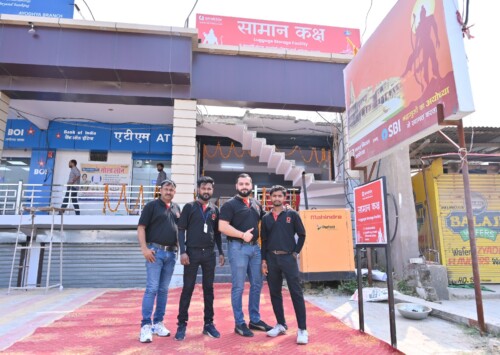With 46 pc yearly growth India is the world’s second-largest freelance economy
Post-pandemic, flexible careers replace 9-to-5 fatigue.

In journalism and media, where layoffs and shrinking newsrooms have become commonplace, freelancers are filling the gaps with agility.
As India emerges as the world’s second-largest freelance hub, a growing wave of experienced professionals from media, IT, marketing, and beyond are leaving traditional jobs in favour of flexible, independent careers. Driven by burnout, workplace hierarchies, and a desire for autonomy, they are reshaping the future of work, one project at a time, in a rapidly expanding freelance economy.

In journalism and media, where layoffs and shrinking newsrooms have become commonplace, freelancers are filling the gaps with agility.
In the sweltering summer of 2024, Ritika Sen, 29-year-old then a deputy editorial lead at a leading English daily in Mumbai, found herself emotionally drained and professionally cornered. Years of chasing headlines under relentless deadlines had taken a toll not just on her mental health, but on her love for journalism itself. Subtle taunts and constant second-guessing from senior editors only deepened her self-doubt.
“I realised I was spending more time defending my ideas than developing them. Leaving the newsroom felt scary at first, but freelancing gave me space to breathe, think, and write the kind of stories I actually care about. Now, I work with global outlets, set my own pace, and finally enjoy journalism again,” Sen tells Media India Group.
She recalls, that year, she took a leap of faith into freelancing. Today, Sen writes for global media outlets, ghostwrites for CEOs, and teaches journalism part-time all on her own terms.
Her story is not unique. Across India, thousands of professionals from media to IT to marketing are exiting the 9-to-5 rat race in favour of freelance careers. The country now boasts the world’s second-largest freelance workforce, only behind the United States, with an estimated 15 million freelancers as of 2024, according to the Indian Freelancers Association. And this number is growing rapidly.
A 2023 report by Payoneer, a global payment platform catering to freelancers, revealed that India’s freelance economy recorded a staggering 46 pc year-on-year growth, outpacing much of the world. The report noted a sharp uptick in professionals with over 8–10 years of corporate experience pivoting to freelancing, particularly in sectors like technology, content creation, digital marketing, design, and financial consulting.
Pandemic push and the flexibility pull
Covid-19 pandemic was a critical inflection point. As remote work became the norm, many professionals realised they did not need an office or even a boss to be productive.
“The pandemic unlocked the mindset that you could be efficient without physical oversight. For years, I believed that productivity was tied to office presence. But once we went remote, I realised how much more I could achieve on my own terms. That is when I decided to freelance full-time. Now, I handle clients in Singapore, Canada, and the Middle East often from my home with no commute, no office politics, and total control over my schedule. It is not just flexible, it is fulfilling,” Prashant Deshmukh, 34-year-old freelance software engineer, from Delhi tells Media India Group.
According to a 2024 report by NITI Aayog, the former Planning Commission, over 28 pc of Indian knowledge workers expressed interest in independent work due to the freedom, flexibility, and the potential for higher income. For women professionals especially, freelancing has opened doors that the corporate world often left shut.
“After maternity leave, returning to a rigid 10-hour office schedule felt impossible. I needed flexibility, not just for my child, but for my own well-being. That is when I turned to freelancing. It was not just a fall-back, it became a breakthrough. From my home in Sarita Vihar, South Delhi, I now manage multiple digital marketing clients across sectors, set my own hours, and earn more than I did in my full-time job. Freelancing gave me what the corporate world could not: autonomy, balance, and financial independence,” Shruti Nayak, tells Media India Group.
Media professionals carve out new identities
In journalism and media, where layoffs and shrinking newsrooms have become commonplace, freelancers are filling the gaps with agility.
“Mainstream media is not hiring the way it used to, shrinking newsrooms, fewer beats, and tighter budgets. But outside those walls, the demand for good storytelling has exploded. Brands, NGOs, startups, even government campaigns, they all need narratives that connect. That is where freelancers like me come in. As a content strategist, I now blend journalism with strategy, and I get to choose projects that align with my values. Freelancing has not just kept my skills relevant, it has expanded what I thought was possible with them,” Faizal Khan, a resident of Sujwan in Jammu, tells Media India Group.
A report by the Reuters Institute in 2023 found that India’s media freelancers, especially in regional languages, are playing an increasingly important role in hyperlocal reporting, often earning more than their salaried counterparts.
“My monthly income has more than doubled since I went freelance but the real reward is not just the money. It is the autonomy. I no longer chase newsroom approvals or write stories I don’t believe in. Now, I choose what I write, who I write for, and when I work. Freelancing has allowed me to reclaim my identity as a journalist on my own terms,” Sen adds.
Still, the path is not without hurdles. Freelancers in media often face erratic payments, lack of legal protections, and the pressure of constant pitching.
“There is no Human Resource department to escalate late payments to. You need thick skin and strong networks,” says Khan.
While the freelance media boom is significant, it is dwarfed by the surge in technical and financial freelancing. According to a joint report by National Association of Software and Service Companies, (NASSCOM) and Aon, the Indian IT sector has witnessed a 34 pc increase in gig-based hiring since 2021. The report projects that the number of gig workers in India will grow from 7 million in 2021 to 23.5 million by 2030, driven largely by demand for flexible, project-based talent in sectors like software development, data science, and cybersecurity.
Ecosystem evolving, but challenges remain
Recognising this tectonic shift, even the government has taken note. In 2023, the Ministry of Labour proposed a framework to bring freelancers and gig workers under a social security net, including access to pensions and health insurance through the e-Shram portal. Platforms like Refrens, Flexiple, and GigIndia are also offering tax, legal, and invoicing support tailored for Indian freelancers.
As India aims to become a USD 5 trillion economy, the gig and freelance sectors are expected to play a central role in reshaping employment. The Boston Consulting Group estimates that by 2030, nearly 24 million Indians could be part of the formal freelance workforce.
For those like Sen, the transition has been more than just a career shift it has been a philosophical redefinition of work itself.
“Freelancing forces you to bet on yourself every day. It is risky, yes, but also the most empowering choice I have made,” says Sen.
The rise of freelancing has not only reshaped the careers of many professionals in India but also significantly impacted the way media organizations operate. As traditional full-time roles give way to more flexible, contract-based work, editors are increasingly recognizing the benefits of this shift. Tahir Bhat, the editor of The Patriot, a Delhi-based weekly newspaper, is one such industry leader who has embraced the freelance model for its operational efficiency and ability to provide high-quality journalism.
“As a media organisation, we have had to adapt to the changing dynamics of the industry. Freelancing has become a key component of our strategy for both content quality and operational efficiency. The traditional model of full-time employees, while beneficial in some ways, often comes with significant overhead costs salaries, benefits, and long-term commitments. With freelancers, we can maintain a diverse pool of talent without these ongoing expenses. This flexibility allows us to scale our operations based on project needs and editorial demands,” Bhat tells Media India Group.









